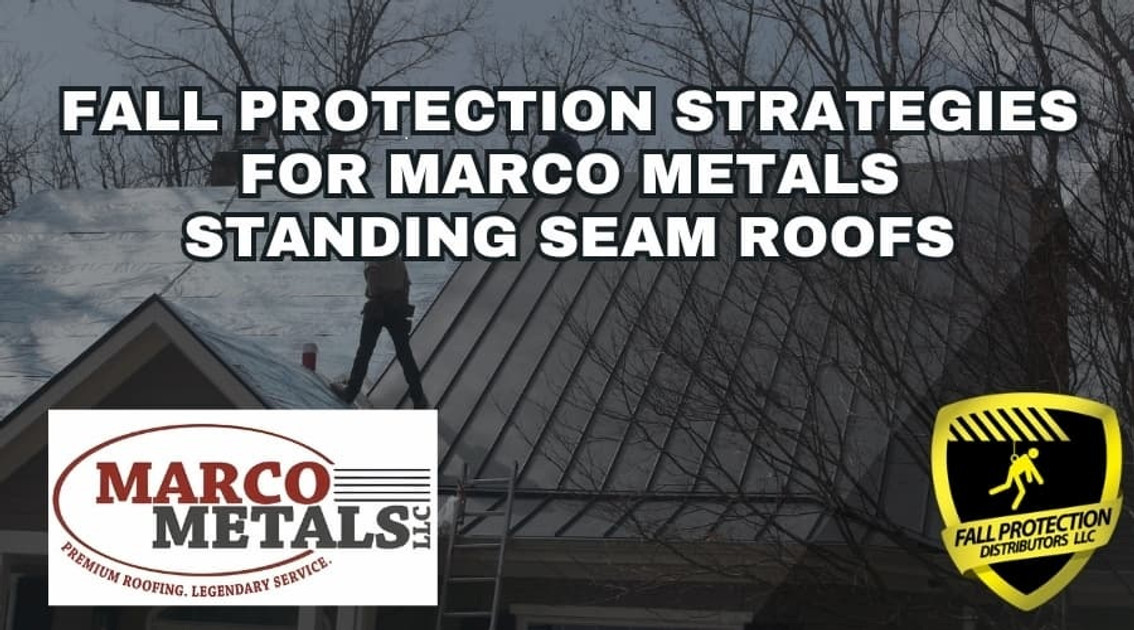Fall Protection Anchors for Marco Metals Roofs
Posted by Howie Scarboro – CEO Fall Protection Distributors, LLC on Oct 10th 2025
See the Roof Anchor Compatibility Chart for Marco Metals Standing Seam Panels.

Who Is Marco Metals?
Marco Metals LLC is a family-owned manufacturer and supplier of metal roofing and post-frame building materials in Harrisonburg, Virginia, where the company continues to serve contractors, builders, and property owners throughout the mid-Atlantic.
Marco Metals fabricates a wide range of metal roofing and siding systems using precision, computerized roll-forming equipment. They manufacture standing seam panels, exposed fastener panels, and complete post frame packages that include trim, fasteners, closures, and accessories. The company's color options include standard and premium finishes designed to enhance energy efficiency and resist fading in demanding climates.
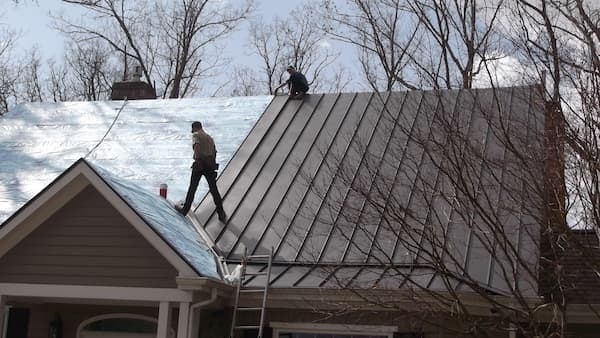
Why Specialized Anchors Are Critical for Standing Seam Roofs?
Standing seam roofs expand and contract with temperature changes while keeping water out.
That flexibility is part of what makes them so durable. Still, it also means they cannot be drilled or penetrated without causing problems. A screw through the seam may seem minor, but over time, it can lead to rust, leaks, or panel distortion. Once that happens, the roof's warranty and long-term performance are both at risk.
Specialized non-penetrating anchors are crucial for safe work on these systems. These anchors clamp directly to the raised seams, creating a secure tie-off point without compromising the roof's surface. The SSRA1 Standing Seam Roof Anchor, for example, attaches firmly to the seam and provides a 5,000-pound-rated connection that meets OSHA and ANSI requirements. After securing the anchors, workers can attach SSRA2 Adjustable Roof Jack Adapters to support walkboards for safer footing, or mount SSRA3 Anchor Plates to connect horizontal lifelines.
This approach protects the integrity of the roof while keeping workers completely tied off from the ladder to the ridge. Non-penetrating anchors give contractors the confidence to focus on the job, knowing that both safety and the roofing system are fully protected.
1-Inch Nailstrip Snaplock Panels

The 1-inch Nailstrip Snaplock panel offers a clean, modern look that fits residential, light commercial, and architectural projects alike.
Its clipless concealed fastener system speeds up installation without sacrificing strength or appearance. Panels attach directly through a slotted nailing flange, making them ideal for shorter runs that do not require mechanical seaming tools. Each panel typically provides 16 inches of coverage, with custom widths available upon request. See the Roof Anchor Compatibility Chart for Marco Metals 1-Inch Nailstrip Snaplock Standing Seam Panels.
Contractors can choose from 26- or 24-gauge Galvalume steel panels, or order painted finishes and aluminum options for specialized applications. The panels install over solid decking or sheathing and should not be applied directly to open framing. Design options include flat pans, striations, pencil ribs, or bead patterns that increase rigidity and minimize visible panel stress.
Marco Metals offers these panels in premium Fluoropon and Englert color systems using Kynar PVDF coatings that resist fading and chalking. Trim, flashing, and color-matching accessories complete the roofing package. Paint and substrate warranties extend up to 40 years, depending on the finish. The Nailstrip Snaplock system remains a favorite among roofers who want long-lasting performance, smooth architectural lines, and fast, efficient installation.
Fall Protection for 1-Inch Snaplock Panels
When working on 24-gauge steel versions of the 1-inch Snaplock system, a complete non-penetrating fall protection setup is essential.
The SSRA1 Standing Seam Roof Anchor attaches directly to the seam, providing a secure 5,000-pound-rated connection that meets OSHA and ANSI standards while preserving the watertight surface of the roof. After installing the SSRA1 anchors, crews can mount SSRA2 Adjustable Roof Jack Adapters over them to hold ten-foot wooden walkboards and create a stable, level platform even on steep slopes.
Crews can expand the same anchors with SSRA3 Anchor Plates to create secure tie-off points for temporary horizontal lifelines. For larger projects, the SSRA HLL Kit provides a comprehensive 100-foot lifeline system, comprising four SSRA1 anchors, two SSRA3 plates, and a durable kernmantle rope lifeline. This setup allows multiple workers to stay tied off continuously while moving across the roof, all without penetrating the panels or affecting performance.
For permanent safety systems, the Super Anchor 120-foot Standing Seam HLL Kit installs a galvanized steel cable lifeline, providing long-term access for maintenance and inspections. Do not use seam clamping on panels made from aluminum or lighter gauge steel. In such cases, the Ridge Pro Steep Assist is the safest solution for roof slopes between 6:12 and 12:12, as it hooks securely over the ridge. It connects to the lifeline before the worker ever steps onto the roof, maintaining a full tie-off from the ladder to the ridge and back again, while keeping the roof intact and watertight.
1.5-Inch Nailstrip Snaplock Panels

The 1.5-inch Nailstrip Snaplock panel combines modern architectural style with the simplicity of direct fastening.
This system eliminates the need for clips, relying instead on a concealed slotted nailing flange that locks each panel into place. It's well-suited for upscale residential roofs, light commercial projects, and low-maintenance architectural applications that require both strength and a refined appearance. See the Roof Anchor Compatibility Chart for Marco Metals 1.5-Inch Nailstrip Snaplock Standing Seam Panels.
The 16-inch-wide Nailstrip panels can be made from 24- or 26-gauge steel. Aluminum options are available when reduced weight or higher corrosion resistance is required. Each panel installs over solid sheathing and can be specified with a flat surface, ribbed texture, or pencil beading to add rigidity and reduce the chance of oil canning. Marco Metals finishes these panels in durable PVDF coatings such as Kynar, available in several long-lasting colors. Paint and substrate warranties can reach up to 40 years, depending on the selected finish.
This Nailstrip Snaplock system provides a balance of visual appeal and dependable performance. It installs quickly, delivers a clean, contemporary look, and performs reliably under changing temperatures and harsh weather conditions common across the Mid-Atlantic.
Fall Protection for 1.5-Inch Snaplock Panels
When working on 24-gauge steel versions of this panel, a non-penetrating safety system keeps both the worker and the roof protected.
The SSRA1 Standing Seam Roof Anchor attaches directly to the seam without drilling, creating a secure 5,000-pound-rated connection that complies with OSHA and ANSI standards. After setting the anchors, crews can mount SSRA2 Adjustable Roof Jack Adapters over them to hold ten-foot wooden walkboards, creating a stable and level surface for working safely across steep or extended roof sections.
Adding SSRA3 Anchor Plates extends the same anchors into connection points for temporary horizontal lifelines, allowing workers to stay tied off while moving freely across the roof. For jobs that need a complete, ready-to-use system, the SSRA HLL Kit includes four SSRA1 anchors, two SSRA3 plates, and a 100-foot kernmantle horizontal lifeline. This system keeps multiple workers continuously tied off and installs without drilling a single hole in the roof.
For permanent installations, the Super Anchor 120-foot Standing Seam HLL Kit provides a long-term galvanized steel cable lifeline that mounts securely to the seams. This system is ideal for buildings that require regular rooftop maintenance or inspection. Do not use seam clamping on panels made from aluminum or lighter 26-gauge steel. In those situations, the Ridge Pro Steep Assist is the safest choice for slopes between 6:12 and 12:12. It hooks over the ridge and connects to a lifeline before the worker steps onto the roof, maintaining a complete tie off from the ladder to the ridge and back again while preserving the roof's finish and watertight seal.
1.75-Inch Snap Lock Panels

The 1.75-inch Snap Lock panel combines strength, flexibility, and refined aesthetics for larger residential and commercial applications.
Each panel locks securely over concealed clips that fasten to the roof deck, allowing for controlled thermal movement while maintaining a smooth, seamless finish. This design makes it a preferred option when panel runs exceed 40 feet or when performance under expanding and contracting conditions is critical. See the Roof Anchor Compatibility Chart for Marco Metals 1.75-Inch Nailstrip Snaplock Standing Seam Panels.
These panels are produced in 16-inch coverage widths using 24 or 26-gauge steel and install directly over solid decking or sheathing. You can order the profile flat, striated, or pencil ribbed to match the architectural design and increase panel stiffness. Marco Metals finishes each panel with premium PVDF coatings that deliver long-lasting color retention and resistance to fading, chalking, and corrosion. Paint and substrate warranties extend up to 40 years, depending on the chosen finish. The result is a roof system that looks sharp, installs efficiently, and withstands decades of exposure in demanding conditions.
Fall Protection for 1.75-Inch Snap Lock Panels
Working safely on 24-gauge steel Snap Lock panels requires a fall protection setup that preserves the roof's surface while keeping crews secure and protected.
The SSRA1 Standing Seam Roof Anchor attaches directly to the panel seam without drilling or puncturing, providing a 5,000-pound-rated tie-off point that meets OSHA and ANSI standards. After positioning the anchors, crews can mount SSRA2 Adjustable Roof Jack Adapters over the SSRA1 units to support ten-foot wooden walkboards, creating stable access paths on steep or extended roof spans.
Adding SSRA3 Anchor Plates extends this system by providing connection points for temporary horizontal lifelines up to 100 feet long. Contractors who want a complete temporary setup can use the SSRA HLL Kit, which includes four SSRA1 anchors, two SSRA3 plates, and a 100-foot kernmantle lifeline. This combination allows multiple workers to stay continuously tied off as they move across the roof, all without penetrating the panels or voiding the warranty.
For long-term applications, the Super Anchor 120-foot Standing Seam HLL Kit installs a permanent galvanized steel lifeline across the roof. It's a ready-to-use system designed for ongoing maintenance and inspections. Avoid seam clamping when using panels made of aluminum or lighter gauge steel. In such cases, the Ridge Pro Steep Assist serves as the best solution for slopes between 6:12 and 12:12. It hooks over the ridge and connects before the worker steps onto the roof, allowing for a full tie-off from the ladder to the ridge and back again. This feature keeps the worker protected and the roofing system completely intact.
1-Inch Mechanical Seam Panels

The 1-inch Mechanical Seam panel offers a timeless appearance with exceptional weather resistance, making it ideal for projects that call for traditional aesthetics and long-lasting performance.
Contractors often use these panels on historic renovations, institutional buildings, or low-slope roofs that demand watertight reliability. See the Roof Anchor Compatibility Chart for Marco Metals 1-Inch Mechanical Seam Standing Seam Panels.
Each panel provides 16 inches of coverage and attaches to the roof deck with concealed clips. After installation, crews mechanically fold the seams with a specialized seaming tool to create a locked joint that withstands high winds and heavy rain. Panels are manufactured in 24 or 26-gauge steel and are compatible with solid decking or sheathing for proper support. The profile can be flat or with strengthening ribs, depending on the architectural style and structural needs.
Panels are available in premium PVDF finishes, complemented by coordinating trim that matches the surrounding architectural elements. These finishes maintain their color and gloss for decades, even under intense UV exposure or in coastal conditions. Standard warranties on both material and finish offer long-term confidence for homeowners and contractors alike.
Fall Protection for 1-Inch Mechanical Seam Panels
For 24-gauge steel Mechanical Seam panels, the complete SSRA system provides a reliable, non-penetrating method for securing workers during installation or maintenance.
The SSRA1 Standing Seam Roof Anchor clamps directly onto the seam, eliminating the need for drilling or damaging the roof surface. Each anchor creates a tie-off point that meets OSHA and ANSI standards, ensuring dependable fall protection while preserving the roof's watertight integrity.
Once the anchors are in position, crews can add SSRA2 Adjustable Roof Jack Adapters on top of the SSRA1 units to support ten-foot wooden walkboards. This ability gives workers a safe, level footing across steep or long roof spans. SSRA3 Anchor Plates can then be mounted to the same anchors, creating strong attachment points for temporary horizontal lifelines.
For crews who need a complete system ready to deploy, the SSRA HLL Kit includes four SSRA1 anchors, two SSRA3 plates, and a 100-foot kernmantle lifeline. It offers continuous tie-off for multiple workers while eliminating the need for penetrations or complicated setups. For long-term safety needs, the Super Anchor 120-foot Standing Seam HLL Kit installs a permanent galvanized steel cable lifeline, providing ready access for maintenance teams year after year.
For panels other than 24-gauge steel, such as aluminum, seam clamping should be avoided, in those situations, the Ridge Pro Steep Assist is the best option for roof slopes between 6:12 and 12:12. It hooks over the ridge and connects to the lifeline before the worker ever steps onto the roof, maintaining full tie off from ladder to ridge and back down while keeping the roofing system completely intact.
1.5-Inch Mechanical Seam Panels

The Marco Metals 1.5-inch Mechanical Seam panel is a top choice for architectural and commercial projects that demand long-term durability.
Its taller rib profile enhances wind and water resistance while maintaining the sleek, continuous lines that define high-quality standing seam roofing systems. See the Roof Anchor Compatibility Chart for Marco Metals 1.5-Inch Mechanical Seam Standing Seam Panels.
Contractors often select this panel for government buildings, educational facilities, and custom homes that require exceptional performance under harsh weather conditions. Each panel provides 16 inches of coverage and fastens to the roof deck with concealed clips. Installers mechanically fold the seams using specialized seaming equipment to form a watertight, interlocking connection that can withstand severe wind uplift and driving rain. These panels can be 24- or 26-gauge steel and are compatible with solid decking or sheathing. The panel profile can be flat, striated, or with reinforcing ribs, allowing flexibility in both appearance and performance.
Marco Metals offers this panel in premium PVDF finishes available in a wide range of architectural colors. Coordinating trim and flashing ensures a seamless match, preserving the roof's visual consistency for decades. These finishes retain their color and gloss under heavy UV exposure, backed by long-term warranties on both the paint system and the substrate, providing lasting peace of mind.
Fall Protection for 1.5-Inch Mechanical Seam Panels
Working safely on 24-gauge steel 1.5-inch Mechanical Seam panels requires a non-penetrating system that protects both the worker and the roof.
The SSRA1 Standing Seam Roof Anchor attaches directly to the seam without drilling, creating a 5,000-pound-rated tie-off point that meets OSHA and ANSI standards while maintaining the roof's watertight integrity.
Once installed, SSRA2 Adjustable Roof Jack Adapters can mount over the SSRA1 anchors to support ten-foot wooden walkboards. This setup gives crews a stable, level footing across steep or extended roof sections. SSRA3 Anchor Plates can then connect to the same anchors to provide secure attachment points for temporary horizontal lifelines.
For larger jobs, the SSRA HLL Kit offers everything needed to establish a 100-foot horizontal lifeline system, including four SSRA1 anchors, two SSRA3 plates, and a durable kernmantle rope lifeline. This configuration allows multiple workers to remain tied off continuously while moving along the roof, all without penetrating the panels. For facilities requiring permanent access, the Super Anchor 120-foot Standing Seam HLL Kit installs a galvanized steel cable lifeline, delivering long-term compliance and easy access for maintenance crews.
For panels other than 24-gauge steel, workers should avoid seam clamping. In these cases, the Ridge Pro Steep Assist provides the safest solution for slopes between 6:12 and 12:12. It hooks over the ridge to lock a vertical lifeline before the worker steps onto the roof, maintaining a full tie-off from the ladder to the ridge and back again.
Metal Roof Anchor Panel Compatibility For Marco Metals
| 1-Inch Nailstrip 24 ga. |
1.5-Inch Nailstrip 24 ga. |
1.75-Inch Snap Lock 24 ga. |
1-Inch Mechanical 24 ga. |
1.5-Inch Mechanical 24 ga. |
|
|---|---|---|---|---|---|
SSRA 1 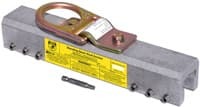 |
NO | NO | NO | NO | NO |
SSRA1 Nylon Tip 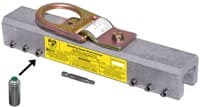 |
YES | YES | YES | YES | YES |
SSRA2 Roof Jack 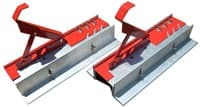 |
YES | YES | YES | YES | YES |
SSRA3 Anchor Plate 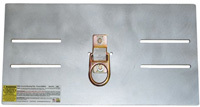 |
YES | YES | YES | YES | YES |
The Ridge Pro 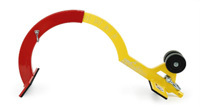 |
YES | YES | YES | YES | YES |
Contact Us For More Information
For further details on roofing solutions and fall protection systems, please contact us at 863-703-4522 or visit www.StandingSeamRoofAnchor.com. Let's work together to make your roofing projects safe, beautiful, and built to last. For more safety tips, refer to OSHA's 48-page Fall Protection Manual. Once you have determined the most suitable anchors for your roof system, download our free Anchor Inspection Form.
Safety Tips For Standing Seam Roofs
Consult Experts for Curved Metal Panels
Curved standing seam roofs present a challenge even to seasoned crews. Seam tension, panel shape, and slope all affect how anchors perform. Before anyone steps onto a radius surface, bring in a fall protection expert to evaluate the layout and recommend an appropriate system. A customized plan keeps workers secure and prevents damage to the panels or fasteners.
Equip Workers with High Quality Safety Gear
Safety gear is the foundation of trust on any roof. Crews perform better when their harnesses fit comfortably, their lifelines move freely, and their connectors hold firm. Regular inspections catch wear before it becomes a hazard. OSHA's 2025 update now requires employers to provide properly fitted equipment for every worker.
Use Specialized Anchor Systems for Standing Seam Roofs
Not all anchors are suitable for a standing seam roof. Clamp-on anchors provide secure tie-off points without drilling through the panels, maintaining watertight seams and full OSHA compliance. Avoid using anchors that attach over clips because those fasteners become inaccessible once the roof is complete. The right system keeps both the roof and the crew safe for years to come.
Ensure Proper Footwear for Stability
Every safe climb starts with solid footing. Roofing boots with deep tread and ankle support prevent slips on smooth metal surfaces. They also reduce leg fatigue during long hours of standing and moving. A good pair of boots often makes the difference between steady balance and a costly misstep.
Promote a Culture of Safety
The strongest safety plans fail without buy-in from the crew. When workers look out for one another and communicate, safety becomes an integral part of the daily routine. Honest and open communication turns near misses into lessons and builds habits that protect everyone on site.
Install Permanent Roof Anchor Systems
Buildings that require frequent roof access benefit from permanent anchors. Once installed, they provide immediate tie-off points for maintenance teams or inspectors. Crews can begin work without setting up temporary gear, thereby reducing time, mistakes, and costs while maintaining the structure's appearance intact.
Set Up Protective Guardrail Barriers for Work Zones
Guardrails provide constant, passive protection that doesn't rely on equipment use or attention. Around skylights, roof edges, and access hatches, these barriers prevent falls before they occur. They also provide visual cues that remind workers where danger zones begin, creating a safer workspace even during high-traffic activity.
Encourage the Use of Trauma Straps
A harness may stop a fall, but without trauma straps, a worker left hanging can face serious health risks within minutes. These small straps attach to the harness and enable a suspended worker to shift their weight, thereby relieving pressure and improving circulation. They're inexpensive, simple to use, and vital in any emergency.
Develop OSHA Compliant Safety Plans
Preparation prevents panic. A well-written safety plan identifies anchor points, outlines rescue procedures, and assigns responsibilities, ensuring everyone knows what to do before they begin. Clear plans prevent confusion on the job and help crews focus on the task while staying compliant with OSHA standards.
Prioritize Ladder Safety Training
Most jobsite injuries occur before the work even begins. Inspect ladders daily, set them at the correct angle, and keep the 4-to-1 rule in mind. Maintain three points of contact at all times. Following these basic principles prevents many of the most common—and most serious—roofing falls.
Disclaimer
The views, recommendations, and information presented in this blog are solely those of the author and do not necessarily reflect the opinions or positions of the featured panel manufacturer, its brands, subsidiaries, or parent companies. Customers are strongly encouraged to contact the roof panel manufacturer directly for inquiries regarding fall protection compatibility with their products and to address any potential warranty issues that may arise after installing our products.

